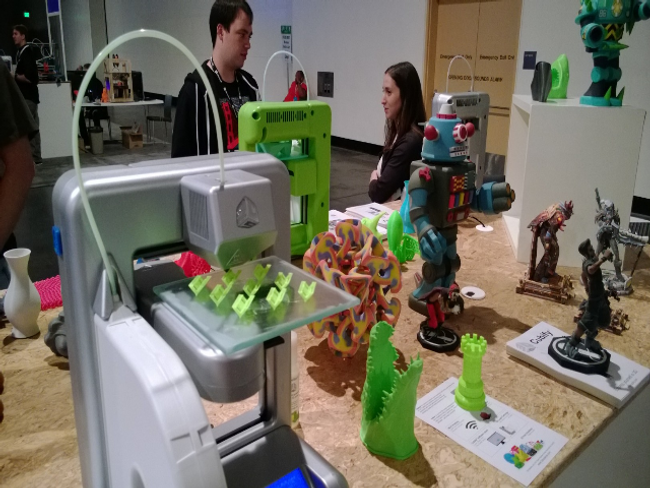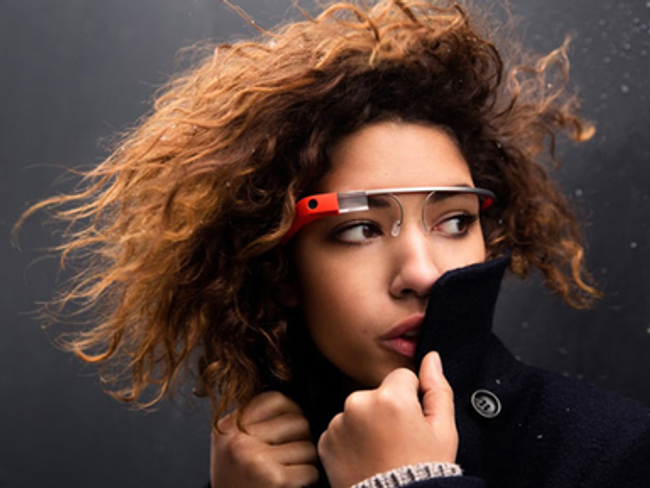Last year we made predictions around how in 2013 cloud computing hype would give way to talk about big data, the eventual arrival of 4G and faster broadband, increased interest in robotics, 3D printing getting real and whether Apple would bring out its fabled television set.
Business thinker Peter Drucker famously opined that trying to predict the future is like trying to drive down a country road at night with no lights while looking out the back window.
So it was with a fair amount of trepidation that I looked back on some of those predictions written as 2012 came to a close.
Preparing to eat crow, it was with a sense of relief that we placed a few safe, but predicable bets for the past year.
The internet of things and big data
“In 2013, subjects like cloud computing will begin to give way to more practical discussions about utilising big data – making use of the immense volumes of knowledge and insight created every second via tweets and other forms of social media, as well as the data that M2M devices will generate.”

If 2013 taught us anything, it was that cloud computing is ever-present in our working lives and snake oil salesmen no longer need to talk about it in evangelical terms. It’s just there and we use services like Dropbox, Evernote, Google Drive, Box, Sky Drive, et al, not to mention Skype, Gmail, Outlook.com and other services as if they were always there and will always be on.
Data centre investment activity in Ireland accelerated towards the end of the year, when Microsoft announced 380 construction jobs for a new data centre, as well as Digital Realty Trust creating 150 further jobs for another data centre – all there to host the cloud.
But as the wheels of cloud continued to turn, the conversation did indeed seem to shift towards big data. The Irish Government put its money where its mouth is on the subject, with the launch of the Insight Centre for Data Analytics.
Billed as the largest investment in a single research centre in the history of the Irish State, the Science Foundation Ireland (SFI)-supported centre had its launch recently in the Royal Hibernian Academy in Dublin.
Bringing together around 200 researchers and numerous industry partners and with total funding of €88m over the next six years, Insight is expected to create 300 direct jobs and result in 12 new spin-out companies.
Aside from big data, the move towards the internet of things gained pace, with an especially Irish twist. The internet of things – a world of 70bn sensors and more – is colliding with what is known as the Maker Revolution, where technologists and inventors are creating a multitude of products and services by pulling together electronics and communications components as if they are pieces from a Mecano set.
In October, a team of 70 researchers from Intel in Ireland made their contribution to the revolution in wearable devices and the internet of things with the creation of the Intel Quark SoC X000 which will feature on the Intel Galileo development board. The first batch of the new dev boards inventors and businesses will use to create internet of things products were branded ‘Designed in Ireland’ – a fitting badge of honour for a country that intends to be at the forefront of future shifts in technology.
Superfast broadband and 4G
“The onset of the first superfast broadband services will dovetail with the arrival of the first 4G broadband services, where speeds up to 180Mbps are possible.”
As we expected, Eircom, bolstered by a seasoned management team and unburdened by less debt, would step up to the plate in terms of broadband. As we neared the end of 2013, Eircom introduced vectoring technologies that would increase the speed of broadband in the 1.2m homes that will eventually be served with VDSL fibre-based services from 70Mbps to 100Mbps.
In addition, Eircom announced it would be bringing its fibre broadband to an additional 200,000 premises throughout Ireland.
Around September/October, the various mobile operators began launching their various 4G services in key Irish cities.
Just ahead of this, UPC announced it was increasing its broadband speeds to 120Mbps and that its entry-level broadband speeds would be starting at 50Mbps.
While in Ireland 65pc of Irish households have access to a broadband connection, 2013 was a pivotal year for broadband in terms of speed. We hope 2014 will be the year that finally people in Ireland who want decent broadband speeds no matter where they live will be provided with adequate and affordable services.
The robotic future is now
“From 2013 onwards, robotics will become a focus of the technology industry.”
No matter what science fiction you are into, robots feature large. But in the popular imagination robots like R2D2 or C3PO tend to ignore the reality that we are really only at the dawn of this revolution and it could be quite awhile before we can see ourselves talking and communicating through these devices.
Robots would seem to have been a wildcard prediction but in the end it was internet giant Google that stepped out of the traps.
The company appointed former Android chief Andy Rubin to head up its new robotics division and while the shape of what Google has in mind may take a while to manifest, the company was busy in 2013 buying a number of robotics companies, including Boston Dynamics, makers of the Wildcat robot that can outrun most humans at 13 mph, as well as other players, including Meka, Redwood Robotics, Bot & Dolly, Autofuss, Schaft, Industrial Perception and Holomni.
It will probably be a while before we know what Google is really up to, but 2013 was really only the beginning.
3D printers
“The technology is about to go mainstream, potentially allowing garage inventors to create future products at will.”

3D printers in action at Microsoft’s Build 2013 conference in San Francisco in June
Walking around the Microsoft Build 2013 conference in San Francisco, California, 3D printers were everywhere to be seen, printing off everything from guitars to plants, toys and engineering parts.
At the conference, Microsoft revealed that Windows 8.1 would come with drivers to facilitate the emergence of consumer-friendly 3D printing devices.
Microsoft vice-president Antoine Leblond said Microsoft itself will soon begin selling 3D printers to consumers, such as the MakerBot Replicator 2 and the Cube printer from 3D Systems, which is now available at Staples for less than US$1,300.
“Windows 8.1 will be the first and only platform to support 3D printing with drivers for app creators built in,” he said.
In Ireland, brothers Conor and Fintan MacCormack’s Mcor Technologies developed 3D-printing machines that use one of the most affordable materials around – A4 paper. Retail giant Staples has forged an alliance with Mcor Technologies to launch a 3D-printing service, beginning in the Netherlands. The service will allow students, designers and consumers to print photorealistic 3D items in Staples stores.
Tablets to wearable tech
“The weight and width advantages seen in the iPad mini will likely correspond in a 9.7-inch ultra-thin iPad 5. Judging by the pattern with which Apple releases new iPhone devices, if a new iPhone generation is unveiled in the autumn, more than likely it will be an iPhone 5S rather than an iPhone.”
There is nothing to be smug about predicting what Apple will do next, at least not in recent years as the tech giant seems to march to a predictable enough pattern. The iPad 5 we referred to emerged as the iPad Air, but it’s nice to be right about the iPhone 5s.
However, NFC capabilities we were predicting never materialized. Instead however, we were greated with a rather interesting fingerprint identification feature as well as the arrival of 64-bit computing in the mobile world via the uber-fast A7 processor.
Google’s Glass wearable tech is still a treat only to be enjoyed by the tech elite of Silicon Valley. However, more and more people seemed to be sporting devices like Fitbit and Nike Fuel to augment their fitness regimes and boast about their three or four-mile daily runs on Facebook.
Rumours of an Apple iWatch appeared to energise Samsung as it trotted out its Galaxy Gear smart watch at IFA in Berlin in September – just to be there first we expect.

The TV frontier
“Expect set top boxes to be where the action is in 2013, as players like Sky and UPC evolve their on demand services. UPC is likely to debut its long-awaited Horizon set top box that doubles as a digital hub for the home in terms of wireless broadband.”
In August UPC launched its Horizon set top box in the Irish market and by the end of November it had notched up 30,000 subscribers using the new set top box.
As well as 100Mbps broadband connectivity, Wi-Fi and 350 hours of recording time, the box came with some very intriguing YouTube functionality that brings up searches based on what you were watching on TV, the new set-top box came with a new range of apps, beginning with 27 apps, including Facebook, Twitter, Score.ie, Google Maps, Picasa and The Irish Times.
Not to be outdone, satellite broadcaster Sky returned fire with new Sky+HD and Sky+ set top boxes with 2-terabytes of storage plus Wi-Fi connectivity for devices around the household.
We only took a brief drive down the dark country lane that Drucker calls the future. Perhaps we’ll need to be more daring with our bets.
Stay tuned for New Year’s Day when we reveal our tech predictions for 2014.